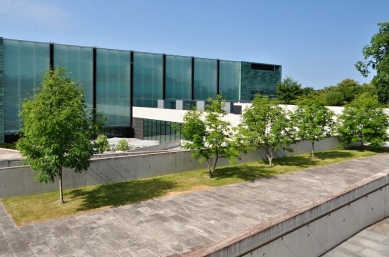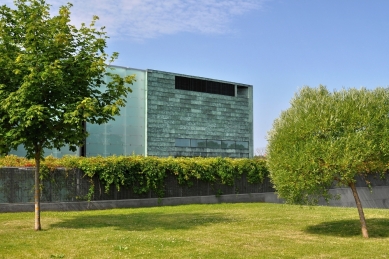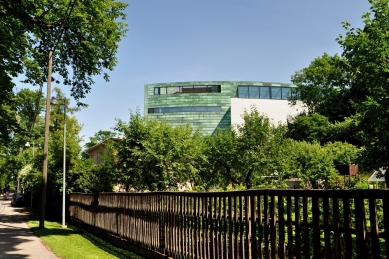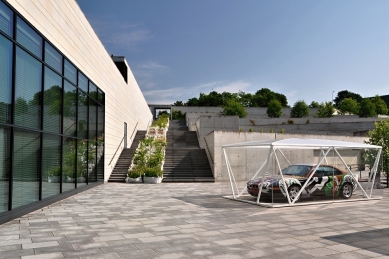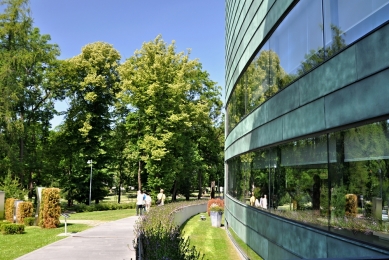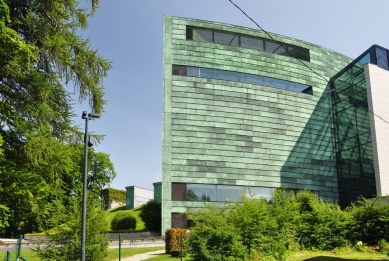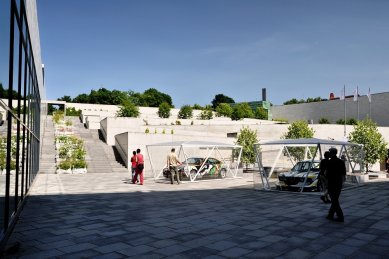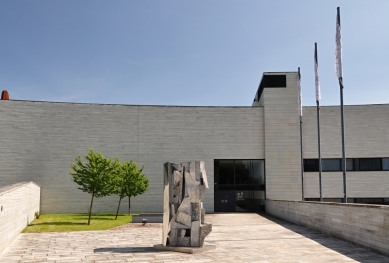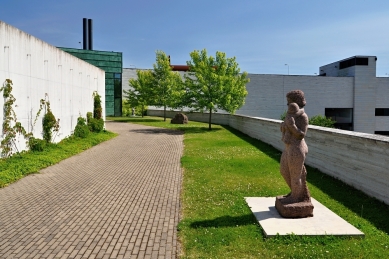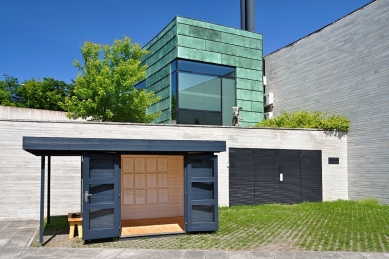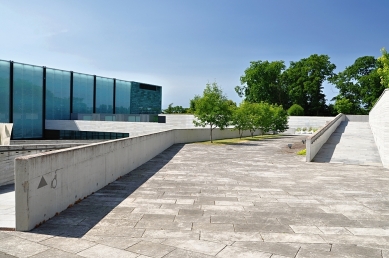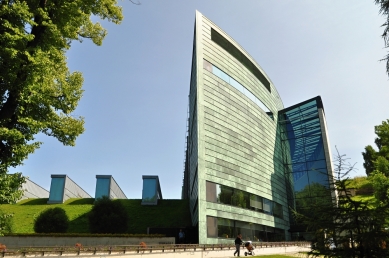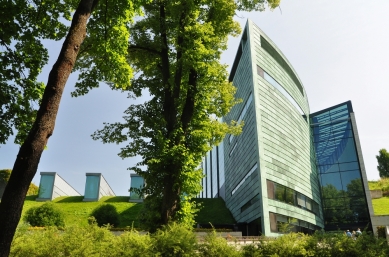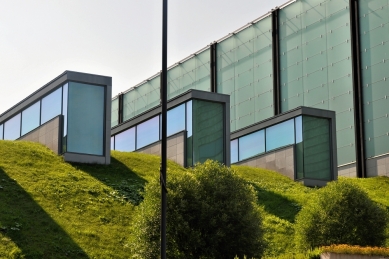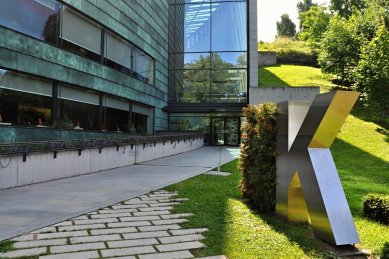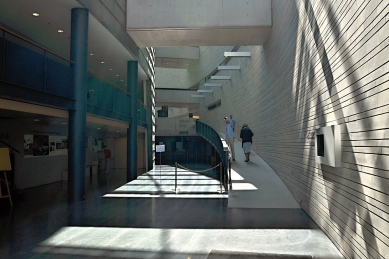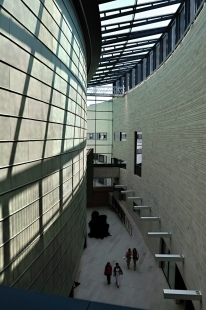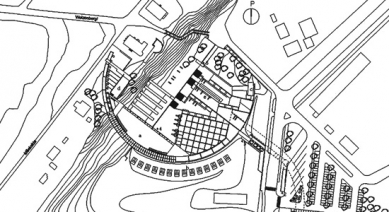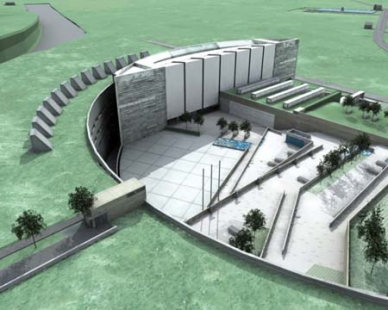
KUMU - The New Main Building of the Art Museum of Estonia
KUnstiMUseum

The project is based on the winning proposal of an intemational architectural competition held in 1994 Further design work began immediately after the competition, and revised preliminary designs were submitted to the museum in January 1995. During next few years there was a long pause until funding was secured in 1999 and the actual design work could begm. After various delays, a building permit was issued in summer 2002. Almost 216,000 cubic metres of limestone was excavated and removed from the site, allowmg construction work to begin in autumn 2003 The construction work was completed at the end of 2005 and the museum was opened to the public on 18 February 2006.
The impressive site with a 20-metre-high lime stone slope is located at the south end of the Kadriorg Park. some 3 km from Tallinn city centre. In order to leave the park as intact as possible and to reduce the impact of this large building, the museum was placed in the slope, partly underground, A curved wall unifies the pian. enclosmg a courtyard externally and dividing functions internally. while clarifying the route through.
The parking area and bus stops are on the uppermost level of the site Visitors walk down the stairs of a pedestnan tunnel and through the outdoor sculpture exhibition area to the main entrance On the entrance level are ticket booths. museum shop and entrance to temporary exhibitions. The other entrance to the museum is on the ground level from the Kardiorg park síde The ramp takés visitors up to the foyer of the auditorium and further to the main entrance lobby The high lobby area that divides the museum into two parts is dominated by the connecting bridges.
The design aims at simplicity and clahty. The exhitxúon halls are simple and unassuming, placing the artwork at centre stage The ascetism of the interior con- tinues in the exterior, which relies on the power of plain geometrie forms The main facade matenals are limestone, green-patinated copper and glass.
The impressive site with a 20-metre-high lime stone slope is located at the south end of the Kadriorg Park. some 3 km from Tallinn city centre. In order to leave the park as intact as possible and to reduce the impact of this large building, the museum was placed in the slope, partly underground, A curved wall unifies the pian. enclosmg a courtyard externally and dividing functions internally. while clarifying the route through.
The parking area and bus stops are on the uppermost level of the site Visitors walk down the stairs of a pedestnan tunnel and through the outdoor sculpture exhibition area to the main entrance On the entrance level are ticket booths. museum shop and entrance to temporary exhibitions. The other entrance to the museum is on the ground level from the Kardiorg park síde The ramp takés visitors up to the foyer of the auditorium and further to the main entrance lobby The high lobby area that divides the museum into two parts is dominated by the connecting bridges.
The design aims at simplicity and clahty. The exhitxúon halls are simple and unassuming, placing the artwork at centre stage The ascetism of the interior con- tinues in the exterior, which relies on the power of plain geometrie forms The main facade matenals are limestone, green-patinated copper and glass.
0 comments
add comment



